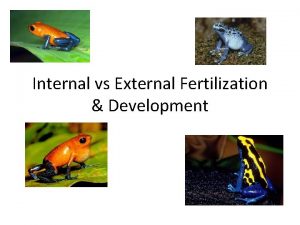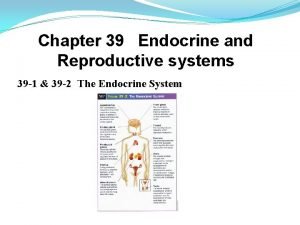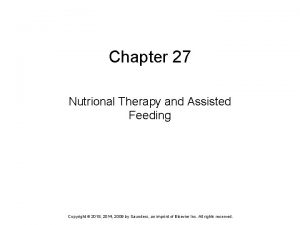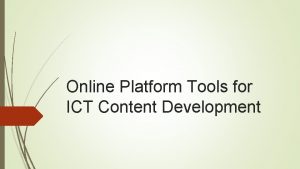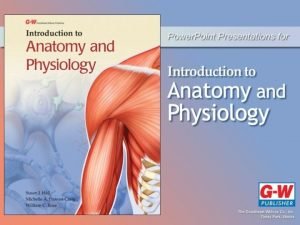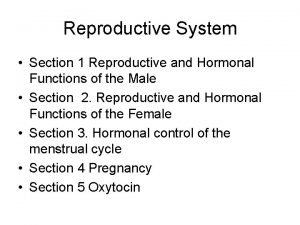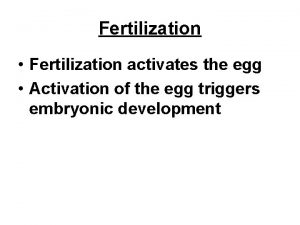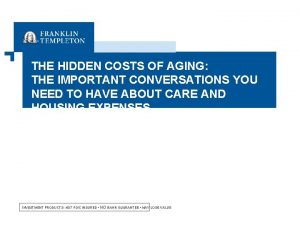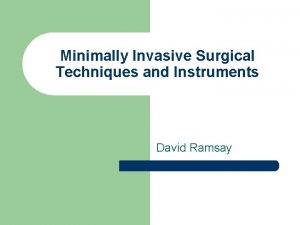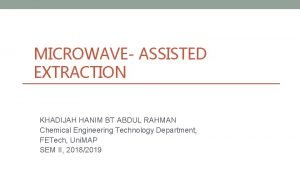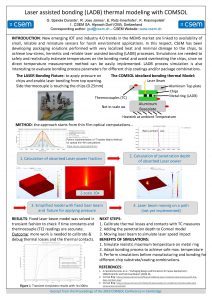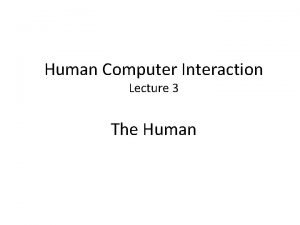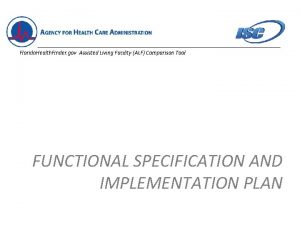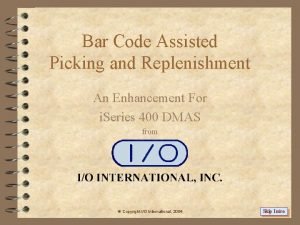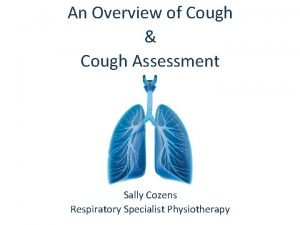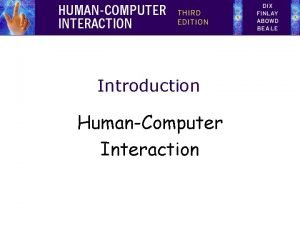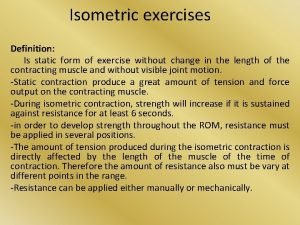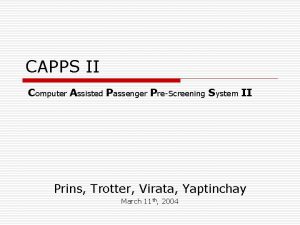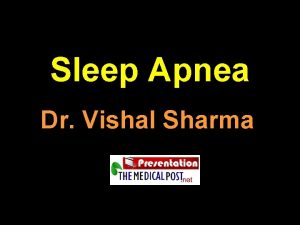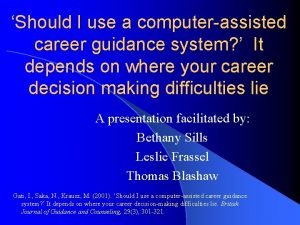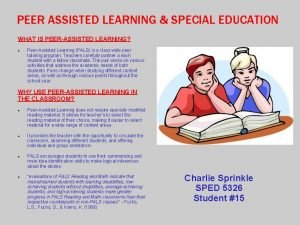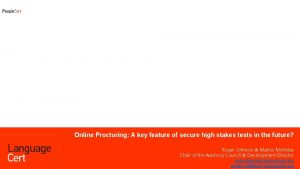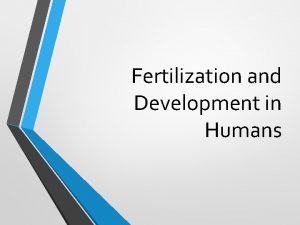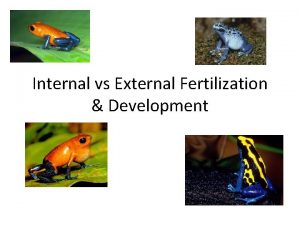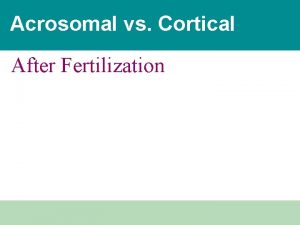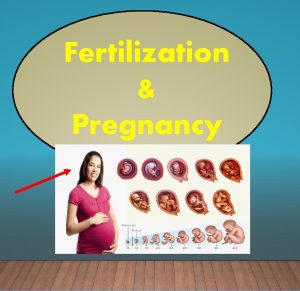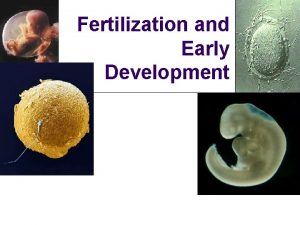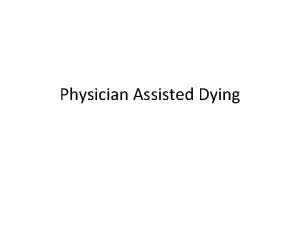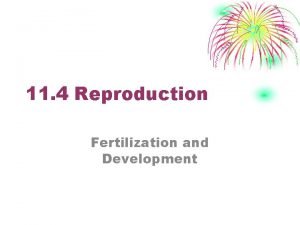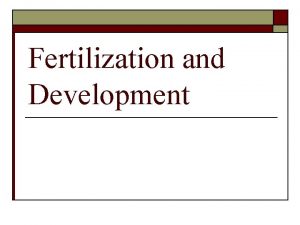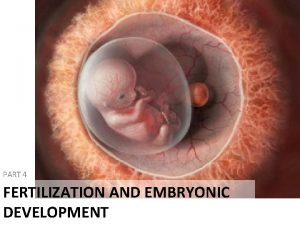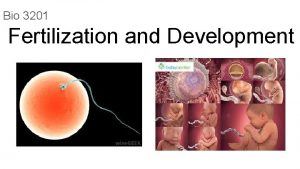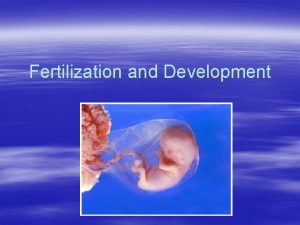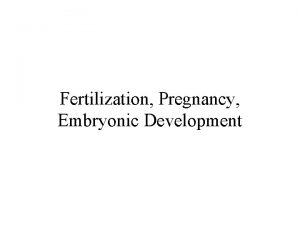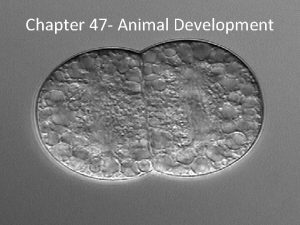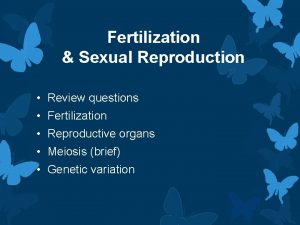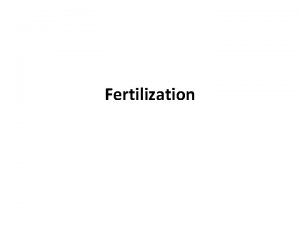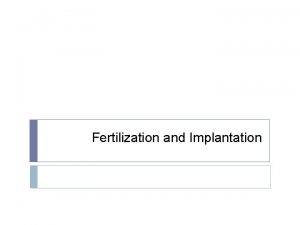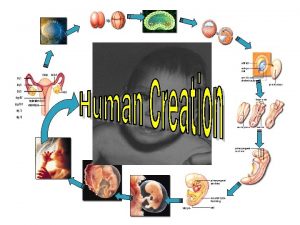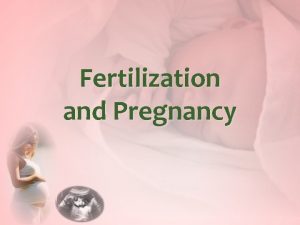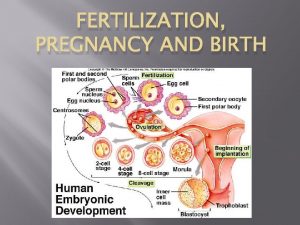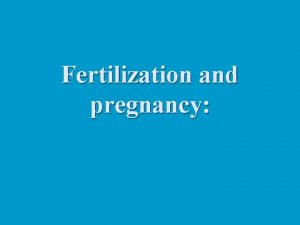Development and current applications of assisted fertilization Review













































- Slides: 45

Development and current applications of assisted fertilization Review Weill Cornell Medical College, New York, NY Fertil Steril. 2012 Feb; 97(2): 248 -59 Presented by Hsing Chun Tsai 2012. 07. 03

Backgrounds • in vitro insemination one of limited steps is achievement of fertilization • Intracytoplasmic sperm injection (ICSI) ultimate technique to allow fertilization with ejaculated, epididymal and testicular spermatozoa – story behind ICSI – the role in ART – how to select preferential male gamete ? – concerns about offspring of severe male factor couples

Histories • Infertility affects approximately 12 -15% of couples of reproductive age. – Caused equally by female and male factors • Late 1970 s IVF became a reality – Successfully treated tubal infertility, but … – limited fertilization rates after in vitro insemination in males with compromised semen parameters and in couples with other etiologies

• Mid 1980 s micromanipulation burst onto the scene – zona drilling: by Gordon and Talansky, creation of an opening in the zona by Tyrode’s solution (p. H 2) • ≧ 1 spermatozoa frequently entered the breached zona – zona cracking: mechanically with 2 fine glass hooks – zona softening: brief exposure to trypsin or pronase – partial zona dissection: cutting the zona with glass pipettes just before exposure of the treated oocytes to spermatozoa • Limitations: – Spermatozoa progressively motile, acrosome reaction – Risk of injury to the oocytes optimal opening size of zona – Polyspermy

• Spermatozoa injection – Subzonal sperm injection: overcoming inadequacies of sperm conc. and motility • Limitation: inability to overcome acrosomal abnormalities or dysfunction of the sperm-oolemma fusion process – Intracytoplasmic sperm injection (ICSI): • Understanding interaction between two gametes • Timing of fertilization synchronicity between nuclear maturation and ooplasmic readiness • Gametic characteristics • Time lapse videoimaging

• Current attention of research for male gamete’s: – Chromatin structure: • two forms of DNA (protamine and histone bound) • small non-coding RNA – Chromatinic integrity – Surface marker of spermatozoa

Outlines • Development of ICSI • Recent accomplishments with ejaculated and surgically retrieved spermatozoa • Current technique to gauge male genomic and epigenomic competence • Recent data on safety of ICSI • Future plans for male infertility

Development of ICSI • Subzonal sperm injection breaching of the oolemma one sperm swim into cytoplast • Does it work ? • 1 st ICSI baby born in January 1992

ICSI trend • about half of all infertility cases directly attributed to male partner – ~6% of males between 15~44 y/o infertility or fecundity severely compromised • Causes: – hormonal disturbances – aberrations in the production of semen – absence of spermatozoa in the ejaculate or azoospermia • 50% hypospermatogenesis • 25% complete germ cell aplasia • 25% spermatogenic arrest

ICSI trend grants the best results (fertilization, clinical pregnancy) • • fresh semen or after cryopreservation immunologic cases with anti-sperm antibody only a few and/or abnormal oocytes available cryopreserved oocytes – Freezing lead to premature exocytosis of cortical granules consequent to a zona pellucida molecular mechanism that inhibits natural sperm penetration • scheduled for PGD / PGS – avoids sperm DNA zona contamination – ↑ # of fertilized oocytes ↑ # of embryos available • azoospermia, cryptozoospermia

• once an ICSI conception established embryo implantation rates similar to other ART, mostly dictated by maternal age • ICSI rates from International Committee Monitoring Assisted Reproductive Technologies (2002) – – – – 61. 4% in USA 53. 8% in Australia and New Zealand 53. 9% in Europe (39. 6% in 1997) 76. 1% in Latin America 92. 5% in the Middle East 60. 8% in North America 47. 5% in Asia 1. improved techniques of ICSI 2. ↑ male factor infertility


ICSI as art in the past 18 years …Cornell Medical College 32, 448 Conc. > 15 x 106 /ml Motility > 40% Morphology > 4% poorer semen parameters

• fertilization rate: IVF < ICSI – corrected fertilization rate: • 59. 4% for ICSI-ejac • 50% for ICSI-SR • high clinical pregnancy rate in ICSI-SR: younger maternal age

1993~present IVF Deliveries ICSI Ejaculated Surgically retrieved 3, 503 (33. 2%) 6, 613 (33. 4%) 790 (37. 6%) Multiple gestations 36. 7% 31. 5% 33. 5% Newborns 4, 909 7, 758 1, 078 Concerns for ICSI procedure: • introduction of sequential media (fashioned with glucose and protein starvation) oocyte damage ü to avoid eversion of oolemma due to adhesion to injection tool ü low protein media adopted for sperm incubation with consequential ↓ ability of the male gamete to undergo capacitation

Difficult patient groups (data from author’s center) Severe oligozoospermia (1, 372) Conc. (/ml) Motility Morphology 0. 3± 0. 3 x 106 17. 3± 19% 0. 6± 1% Cryptozoospermia Conc. (/ml) Motility Fertilization rate 20. 1± 12 x 103 31± 33% 66. 0% Fertilization rate Clinical pregnancy rate 66. 1% 44. 0% Clinical pregnancy rate average # of conceptus transferred 41. 9% 2. 9

• Testicular sperm extraction (TESE) – no reliable test to predict in which candidate sperm will be found – performed 1 day before oocyte harvest ü overnight extended incubation of testicular specimen at 37℃ in 5% CO 2 beneficial for sperm maturation ü But… hamper viability and motility of these immature testicular spermatozoa ↑ strain on operators searching for viable gametes to inject ü incubation at RT appears to benefit spermatozoa, preserving their fertilizing ability

• Spermatid injection: – no spermatozoa available elongated or round spermatid – inconsistent results ü inability to clearly identify these post-meiotic stages in fresh suspensions ü inconsistent capacity to activate the oocyte ü concern related to genomic imprinting

• Severe oligozoospermia, cryptozoospermia, azoospermia – as long as we can identify a single viable spermatozoon , we have a fair chance of achieving a pregnancy – association with genetic defects transmitted to the offspring ? ? ü higher incidence of aneuploidy in infertile men higher frequency of gonosomal abnormalities in male progency meiotic defects during male germ line maturation

The impact of the proportion of immature oocytes and ICSI outcome • average proportion of MII oocytes ~ 80% across most ovulation induction protocol • however, in about 8~9% of cycles <50% of oocytes appear to be mature may limit the availability of conceptuses may impair embryo development competence

67 -100% MII 34 -66% MII 0 -33% MII

• the proportionally increasing immature cohort exerted a negative effect on embryo developmental capacity of their mature oocyte siblings • the negative impact of MI oocyte unlike GV oocyte • asynchrony in nuclear/cytoplasmic maturation occurring in the mature oocyte because of a possible precocious removal of their cumulus cells

Examples 1. Oocyte retrieved as MI and reached nuclear maturity at the time of ICSI lower fertilization rate (59. 9%) vs. already at MII when cumulus removal (75. 7%; p<. 0001) 2. The persistence of immature GV cytoplasmic characteristics in MII oocyte impaired fertilizability or complete fertilization failure – Significantly shorter time interval between h. CG and oocyte decoronization in comparison to their corresponding cycle with fertilization (p<0. 01)

Quest for the ideal spermatozoon • Sperm DNA packed very tightly to protect the DNA during the transit that occurs before fertilization • Shaping of the male gamete nucleus happened in the late spermiogenesis as its chromatin undergoes a remarkable condensation – render sperm transcriptionally inert and highly resistant to digestion

• stabilization of the chromatin by establishment of disulfate bonds as pass through epididymis • metamorphosis of sperm nucleus in the testis • Human sperm nucleus composed of DNA (protamine-rich core and histone-bound region) more compact, stiff and hydrodynamic shape favorable for cell motility and penetration through egg vestments – Cannot sacrifice chromosomal elements essential for embryo to access to correct sequence of paternal genome for proper initiation of the embryonic developmental program

Structures of sperm • Majority of sperm chromatin is compacted into toroids that contain roughly 50 kb of DNA – Sperm DNA exists in a semicrystalline state and is resistant to nuclease digestion • Mammalian protamines contain several cysteines ↑ stability of sperm chromatin by disulfide cross-links – Sperm nuclei more resistant to insults compared with somatic cells • 10 -20% sperm DNA still bound to histones loosely bound region more susceptible to stressors to cause DNA fragmentation – limited proportion and size inconsistent outcome and predictability if current sperm chromatin assays

Infertile men with compromised semen parameters presumably present nicks and breaks in their sperm chromatin. • Compromised DNA integrity (by conventional methods) do not seem to correlate with sperm concentration and morphology. • Systemic observation from author’s lab: – inverse correlation between DNA fragmentation (by SCSA and TUNEL) and motility • lack of predictability between DNA integrity and pregnancy outcome with ICSI only one motile spermatozoa are used for injection regardless of number

Search for ideal spermatozoon • Motile sperm organellar morphology examination (MSOME) modify • Intracytoplasmic morphologically selected sperm injection (IMSI) claimed to yield superior clinical outcomes than conventional ICSI – ICSI with morphologically selected spermatozoa reported to yield higher fertilization, implantation, and clinical pregnancy rates along with lower pregnancy losses and higher rate of healthy offspring

• screening for sperm surface irregularities – did not seem to benefit clinical outcome – detailed morphologic observations (by transmission electron microscopy, scanning electron microscopy, and confocal microscopy) visible irregularities or vacuoles almost ubiquitous in human sperm heads vacuole like structures or craters appear in >90% of spermatozoa from fertile donors with normal semen parameters

• Hyaluronic acid – binding assay – appearing on the surface of mature spermatozoa – to identify the most viable, mature spermatozoa that has intact DNA, limited aneuploidy, restricted amount of histones, and ↑ spermatozoal function ↔ immature spermatozoa retrieved from epididymis and testes had high fertilization and pregnancy rates

Safety of ICSI • the insemination method • the use of spermatozoa with genetic or structural defects • the possible introduction of foreign genes – rate of malformation after ICSI: 2. 6% – Cornell series (13, 745 ART children): the incidence of overall malformation comparable between IVF, ICSI-ejac, and ICSI-SR Major: when surgery required or had the ability to impair daily activity

• Qualms: – inheritance of specific traits – postnatal well-being of the offspring, including growth or cognitive development • singleton births at 5 y/o, multicenter international investigation (Brussels, Sweden, and USA) – no difference in IQ between ICSI and naturally conceived children – parents of naturally conceived children displayed higher level of distress and dysfunctional child interactions and had more “difficult children” (p<. 05) – ICSI children had lower birth weight (p<. 05), and higher proportion of major malformations (p<. 05)

• Standardized parent-administered questionnaire, Ages and Stages Questionnaire (ASQ), as alternative method to evaluate developmental delay – most ICSI/IVF babies had normal cognitive abilities, socioemotional development, and motor skill scores – Of children with developmental delays majority originated from high-order gestation (p<. 01) Single ET is essential in ensuring a healthy baby! – ICSI-SR babies had better score than IVF and ICSIejac babies

Specific concerns to ART • ↑ infant malformations • ↓ birth weight • certain rare syndromes related to imprinting errors • higher frequency of cancers

• developmental gene expression imbalance & transcriptional activity – down-regulation of H 19 without concurrent over expression of IGF 2 in ART population in vitro culture conditions exert deleterious effect on genes IGF 2 H 19 • Beckwith-Wiedemann syndrome – only epigenetic disorder clearly associated with ART – equally distributed among the in vitro conception method – epigenetic imbalances linked to exposure of embryos to longterm culture – ICSI is responsible for any increase in epigenetic disorders ? ? no evidence

adverse perinatal outcome • ART associated with ↑ adverse perinatal outcome • ART singleton pregnancies at risk of low birth weight, preterm delivery and perinatal death ↔ ART multiple gestations thrive as well as or ever better than twins from natural conception – if impaired ART singleton outcome is due to compromised embryo development or to intrauterine environmental factors ? ?

• 17, 415 ICSI cycles at author’s center, 1993. 9~2009. 6 – # of embryo transferred, # of implantation, # of livebirths – average maternal age: 36. 9 ± 5 y/o (range 18 -49) – Large majority of the patients (92. 9%) received average of 3. 0 embryos per ET. – Clinical pregnancy rate: 39. 2% – Pregnancy loss rate: 16. 7% – Overall occurrence of multiple gestations: 38. 3% 10. 3% underwent spontaneous embryo reduction

• Results – Single and multiple ETs generated offspring with comparable birth weights and GA – ↓ birth weight of derived singletons inversely correlated with the increasing # of implantation (p<. 01) implantation with fetal poles, not sacs, dictated growth pattern of multiple gestations ü even after spontaneous reduction, derived conceptus retains growth features expected according to # of implantation • Conclusions: – ART offspring coming from multiple gestations are comparable to those conceived spontaneously – ↑ risk of perinatal morbidity and mortality associated with singleton births linked to the infertile couple and not the insemination method

Conclusions and future perspectives • ICSI the most effective way to solve male gamete dysfunction & applied for a variety of indications – for azoospermia , surgically retrieved spermatozoa • health and developmental potential of offspring born from ICSI comparable to standard IVF • infertile men carry a higher incidence of chromosomal defects, particularly in azoospermia Yq microdeletions – azoospermia is associated with a higher incidence of aneuploidy in the germ cells and with possible ↑ in gonosomal disomies

• Multiple gestations: – health of ART offspring comparable to naturally conceived even considering the older age of the female partners • SGA and prematurity: – higher order of embryos transferred and implanted GOAL ? ?

future perspectives • Oocytes > spermatozoa to clone individual spermatozoon to allow fertilization to probe genetic makeup of the spermatozoon before fertilization generation of multiple concepti & to prevent the generation of defective embryos

• Challenge of male infertility – spermatogenic arrest or germ cell aplasia (whether congenital or post antineoplastic treatments) – Use early spermatogenic precursors for ICSI: induce artificial haploidization of somatic cells and in vitro maturation of male germ cells – Embryonic stem cells or induced pluripotent stem cells can be differentiated and used to repopulate a sterile testicle or to generate new gametes for ICSI – Spermatogonia transplantation

Dreamy or realistic ? • Robot in vitro insemination • Automated machine replacing a fully staffed embryology lab

THANK YOU !

 Bird external fertilization
Bird external fertilization Chapter 39 endocrine and reproductive systems
Chapter 39 endocrine and reproductive systems Line currents
Line currents Phase to phase voltage
Phase to phase voltage N=nc exp(-eg/2kt)
N=nc exp(-eg/2kt) Ac theory 3 lesson 4
Ac theory 3 lesson 4 Drift vs diffusion current
Drift vs diffusion current Intrinsic semiconductor
Intrinsic semiconductor In a ∆-connected source feeding a y-connected load
In a ∆-connected source feeding a y-connected load Infineon
Infineon Diffusion current formula
Diffusion current formula High side current mirror
High side current mirror At cutoff the jfet channel is
At cutoff the jfet channel is Arc
Arc Hazard based safety engineering
Hazard based safety engineering Non planar circuit
Non planar circuit Chapter 27 nutritional therapy and assisted feeding
Chapter 27 nutritional therapy and assisted feeding Disadvantages of russian service
Disadvantages of russian service What are online platform tools
What are online platform tools Lesson 15.4 ovulation fertilization and implantation
Lesson 15.4 ovulation fertilization and implantation Physiological function of estrogen
Physiological function of estrogen Fertilization
Fertilization What is computer assisted language learning
What is computer assisted language learning Hidden costs of assisted living
Hidden costs of assisted living Robot assisted surgery
Robot assisted surgery Microwave assisted extraction
Microwave assisted extraction Laser assisted bonding
Laser assisted bonding Derive logically necessary conclusion from given premises.
Derive logically necessary conclusion from given premises. Florida health finder assisted living
Florida health finder assisted living Advantages of call
Advantages of call Contoh cai
Contoh cai Assisted picking
Assisted picking Cofflator
Cofflator Assisted conception
Assisted conception 254 park place
254 park place Information reproduced from memory can be assisted by cues.
Information reproduced from memory can be assisted by cues. Assisted referral tool
Assisted referral tool Hardware assisted virtualization in cloud computing
Hardware assisted virtualization in cloud computing Eno pointe assisted living reviews
Eno pointe assisted living reviews What is static exercise definition
What is static exercise definition Computer assisted passenger prescreening system
Computer assisted passenger prescreening system Small party assisted rescue
Small party assisted rescue Linguloplasty
Linguloplasty Computer assisted guidance systems
Computer assisted guidance systems Peer assisted
Peer assisted Online proctored exams candidate guidelines peoplecert
Online proctored exams candidate guidelines peoplecert
